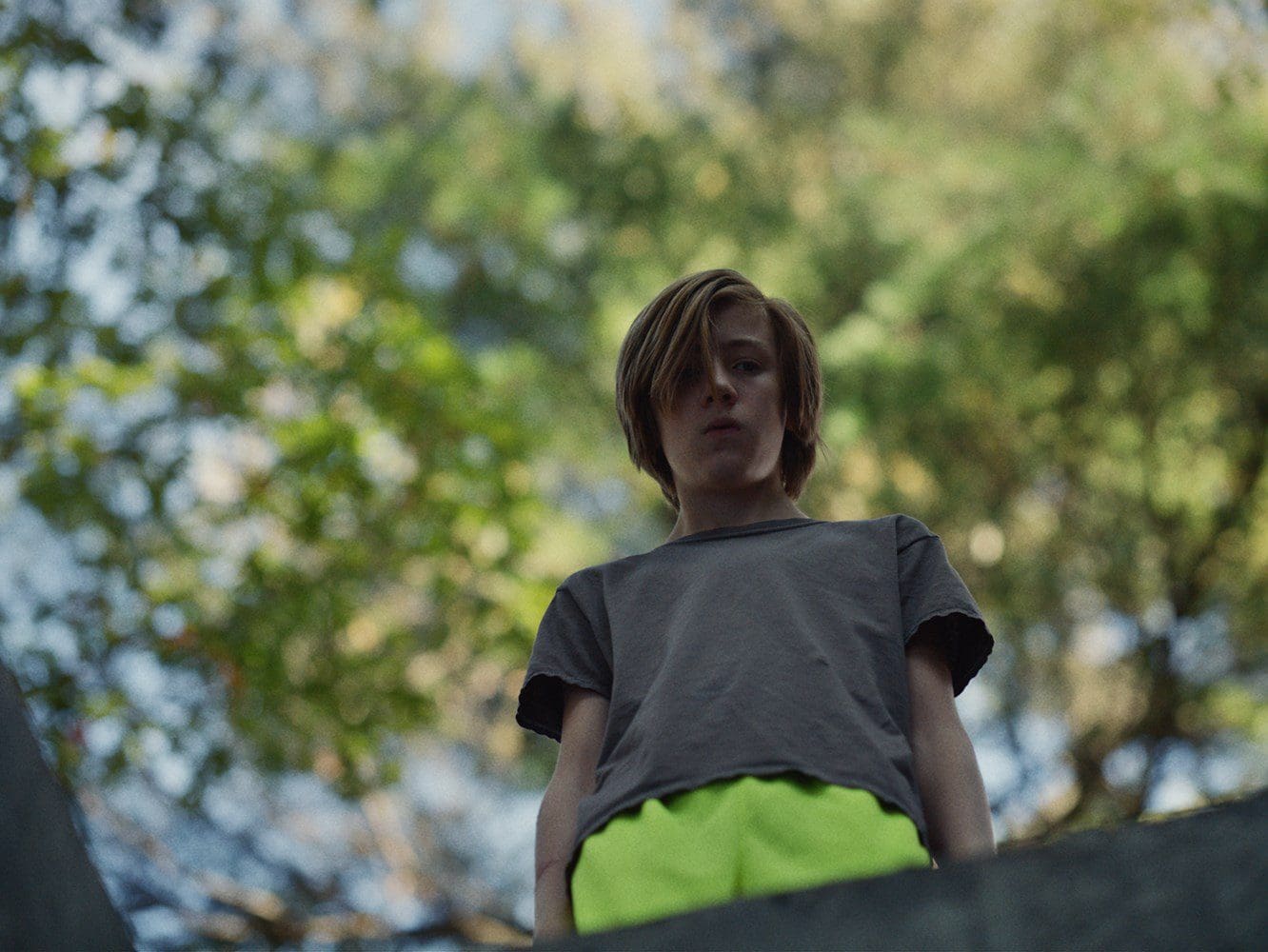
Director Pascual Sisto’s new film, John and the Hole, begins with a scenario familiar to anyone ever caught daydreaming in grade school. In voice over on a black screen, we hear an annoyed teacher tell John (Charlie Shotwell) to stand in front of the class so she can quiz him about the subject at hand, square roots in this case. Though we don’t see John’s face for much of the exchange, we can viscerally imagine the embarrassment he feels as the teacher seems to delight in trying to humiliate him. And while we certainly sympathize with him in that moment, the heinous things he does as the film unfolds are hard to accept—even if they are a metaphor.
When Sisto and cinematographer Paul Özgür finally reveal John’s face in a tight close-up (a shot the DP seems to favor) at the end of that opening scene, his expression is surprisingly blank. His face remains similarly blank as he film progresses and it’s initially hard to tell if he’s a quiet kid with a limited internal life or a budding sociopath. As it turns out, he’s the latter, which we learn when–seemingly unprovoked–he first drugs and then dumps his unconscious family into an unfinished bunker he finds in the woods so he can spend the next few days goofing off without consequence. It’s quite the premise and what works best about Sisto’s film, which writer Nicolás Giacobone adapted from his own short story, “El Pozo”, is how off-kilter it keeps the viewer.
Once we see how far John can go and how emotionless he is while doing it, no depths of depravity seem off limits and Sisto and Giacobone maintain that tension through much of the film’s runtime. Granted, some of what John does isn’t quite so egregious as kidnapping his family or testing out the drug doses first on their unwitting gardener. Watching the 14-year-old order piles of chicken nuggets or learn to drive his parents’ car seem like the fun, forbidden things every kid wishes they could get away with. Things take a turn, though, when John picks up his friend Peter (Ben O’Brien) from the train station after imitating his mother’s voice to convince Peter’s mother to let her son visit.
While their conversation on the car ride home is typical enough of a couple of teenage boys, things take on a sinister air when Peter asks John if he’s ever ever wondered what it’s like to die and the next shot cuts to them taking turns drowning each other in John’s pool. It’s disturbing enough as is (though, admittedly, not unimaginable considering the dangerous games unsupervised children sometimes play), but, given everything we’ve seen John do up until then, disaster seems inevitable when Peter tells John to hold him down for a bit longer once he starts thrashing.
Taken as a literal action a real teenaged boy takes, that incident and much of what John does is unforgivable. As he easily lies to every adult who grows suspicious or forgets to bring food or water to his family for two days running, you almost want to see this little psychopath punished or hurt in some way. However, it’s also clear Sisto and Giacobone intend this film to be taken as a metaphor, but the heavy-handed ways in which they explain those intentions and present the film as a whole ultimately weaken their point.
The first major moment comes well into the film. Suddenly, we cut from John and his family to a little girl playing alone in her room. Like John, she has the sort of affected philosophical movie child air John does. So, it’s a surprise when she asks her mother to retell her his story, prompting the film’s title to finally pop up onscreen. The moment definitively marks the film’s events as a parable for a child—albeit one that involves kidnapping. For some, that moment will be enough to recontextualize what unfolds, lessening the awfulness of what John does by making it an exaggerated story to teach a little girl–and us–a lesson. For others, it will simply be too pretentious a choice to accept.
That’s also true of the second heavy-handed explanation of the film’s central metaphor. As John’s family sits in the bunker trying to figure out why John would do this to them, his mother (Jennifer Ehle) remembers a conversation they had where he asked when you know you’ve become an adult and she explains that her answer, that you always feel like a kid but with more responsibilities, seemed to dissatisfy him. Given those moments, it’s safe to assume that everything John does is part of a metaphor for growing, deciding to be beholden to other people and act with discipline. It’s a compelling idea, but one the film unfortunately leaves it feeling incomplete.
Sisto and Giacobone may clearly declare what their film is about, but they ultimately lean too much into the oddness and tension in the plotting to deliver a totally satisfying ending. Perhaps we can read what happens as either pure parable or an extreme way for John to learn a lesson, but both in Shotwell’s acting and the film’s resolution, John doesn’t seem to have enough internality to pull off that emotional awakening. Likewise, from the plotting, to the sound design, to Sara Shaw’s sharp and jarring editing, everything about the film seems so meant to keep the viewer off balance that it’s difficult to trust the film’s ending. John and the Hole is an intriguing film. It just may not be a deep one.

